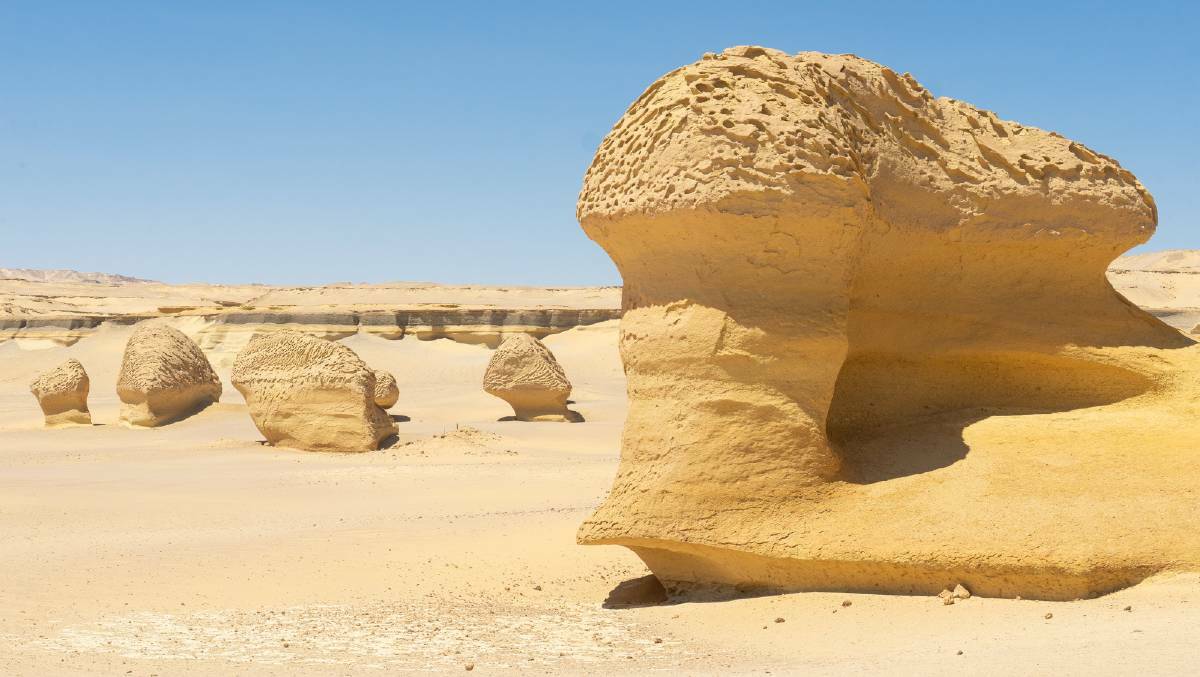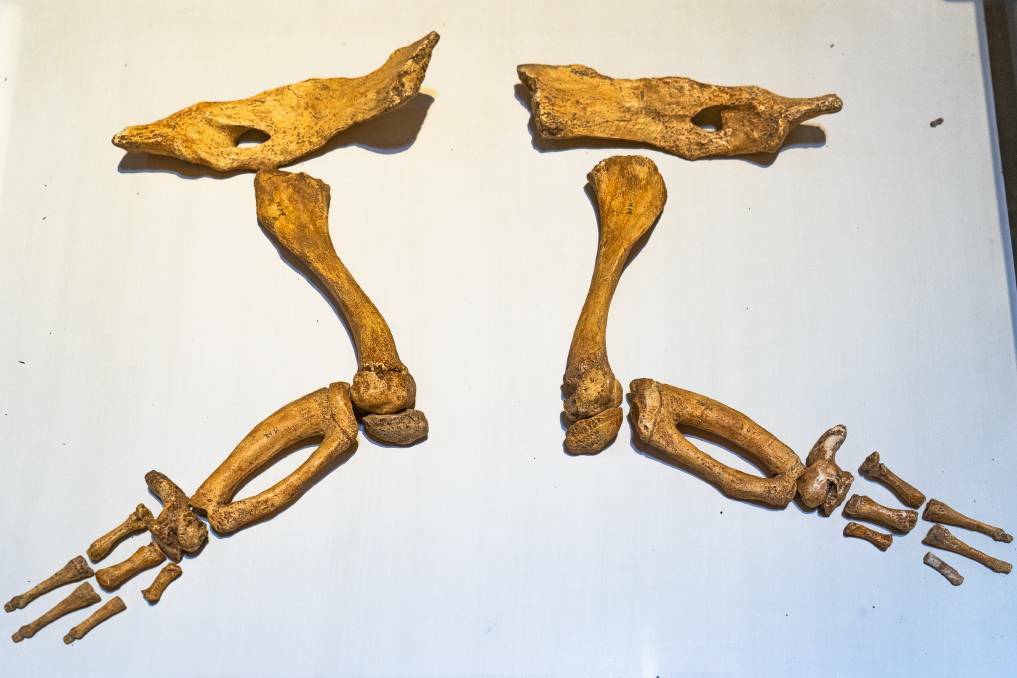As I look around this hot and dusty Egyptian desert, orange sand and dry rock formations in every direction, it’s hard to imagine water. But once upon a time, that’s all there was here. Go back far enough – I’m talking many millions of years – and all of this would have been underwater, covered by a vast sea.
Create a free account to read this article
$0/
(min cost $0)
or signup to continue reading
If I was able to time travel 40 million years into the past to the exact spot I’m standing now, I would be on the sandy floor of a sea and, swimming around me, would be prehistoric animals that would become extinct eons before humans appeared.
Rushing past me in the water might be a basilosaurus – a terrifying carnivorous creature that was one of the earliest whales. The basilosaurus was possibly the largest animal that existed in the world back then. Twenty metres in size, it had a long slender body and a pointed head with large sharp teeth. And legs.
Yes, you read that correctly. This ancient whale also had legs.

The reason we know this is because this desert in Egypt is home to the most incredible collection of fossilised whale skeletons, gaining it the name ‘Whale Valley’. The basilosaurus that might have been swimming past me would one day have died and fallen to the seabed. And then another one would have done the same. And another one. Forty million years ago.
Their bodies would slowly have been covered in sediment over thousands of years, keeping the skeletons in place. And then, as tectonic plates continued to move continents around the globe, this part of Africa was pushed upwards and out of the sea.
In the hot dry climate, the fossils were protected in sandstone. Until, just in the past century, humans dug through to find them and discover evidence to answer one of the great scientific mysteries: Did whales really once walk on land?
Out here in the desert at Whale Valley, I stand in front of one of the fossils. It’s laid out on the sand and my eye traces its outline from the tip of its tail and up to the skull. The skeleton is positioned on a slight incline and so large that I have to walk alongside it to be able to get a good look at every part.
Finally, palaeontologists had found the missing link in the story …
t’s just one of more than 400 whale skeletons that have been discovered here so far – many of which have been taken away for research. Scientists have also found fossils of turtles, sharks and crocodiles, as well as mangrove trees, which help to give a sense of how the underwater landscape would’ve looked.
There are also the bones from a whale called the dorudon, which was normally about five metres long. But it’s the enormous basilosaurus that is the highlight here. For a visitor like me, it is the most impressive skeleton you’ll see. And for scientists, it is one of the most important discoveries ever made in the story of evolution.
You might also enjoy
At the entrance to the Whale Valley site, there’s a small museum which actually gives a good overview of the history of the area. The first thing I see when I go in is a pair of legs. Well, the fossilised bones of two legs, to be precise – and very significant legs, at that.
The fact that the legs were attached to a whale that lived permanently in the sea was quite incredible.
It had always been assumed by evolutionists (including Charles Darwin) that whales must have once lived on land because they were mammals. But there had never been any proof. But here it was. Finally, palaeontologists had found the missing link in the story and it was the basilosaurus.
In some ways, it’s enough of a reason for tourists to visit Whale Valley – I’m certainly struck by the wonder of seeing this for myself. But it’s the environment that I discover out here that I think offers even more incentive to make the trip.
Because the natural landscapes that have been sculptured over millions of years by winds and receding waters are spectacular. The rock formations that come out of the sand create such fascinating shapes – towers and domes, curves and lines. They have layers of different colours, painted by sediment from different eras.

As I walk around, I have the site mostly to myself, bumping into just a handful of other visitors along the four-kilometre trail past the fossils. Not many people make the trip from Cairo to Whale Valley, even though it’s only about 100 kilometres away. Usually that’s because their time in the country is limited and the focus is on pyramids and temples – the Ancient Egypt that is so iconic for travellers.
But visiting Whale Valley reminds me that well before the pharaohs started building their mighty empire, there was an even more ancient Egypt that also left an important legacy for the world. And these bones are the tangible objects representing concepts of time and change that are so large and so slow that they are normally impossible to grasp.




